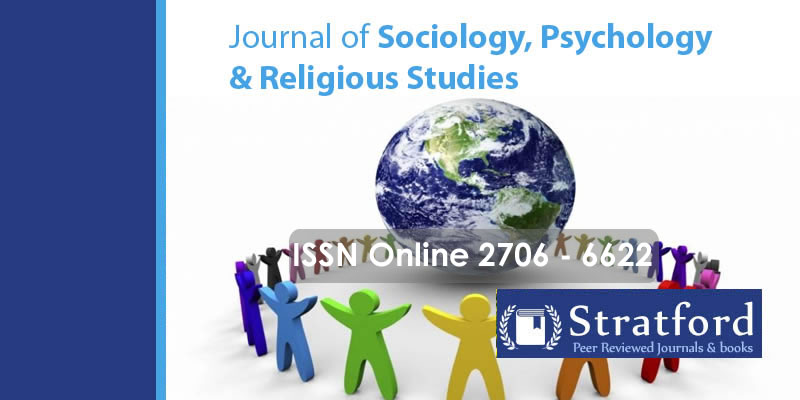Relations between Totems and Humans, the Dagara of Jirapa in the Upper West Region of Ghana, and Indigenous Belief Systems and Lessons for Modern Environmental Conservation
DOI:
https://doi.org/10.53819/81018102t4264Abstract
This essay investigates how the Dagara totemic relationship with totems may be used to protect biodiversity. The Jirapa municipality, one of the municipalities in Ghana's Upper West Region, is the subject of this essay. The study looked into how the totemic connection could be used to advance biodiversity protection and conservation in the Jirapa municipality and elsewhere. It made use of a phenomenological research. No matter where they are located, people who share a totem or, for that matter, a common ancestor, have similar belief systems and take part in similar cultural rituals, according to the study. One of the most important findings of the study was that people would go to great lengths to protect and never destroy their totems, whether they were plants or animals. Because they considered it to be one of them, the people whose totem it was protected the object. This resulted in the preservation of several plant and animal species. Totems represent family, clan ties, and what people view as appropriate or wrong behavior, according to one conclusion. The participants' conversation led them to the conclusion that totems are spiritual beings that defend their human relationships. In conclusion, there are numerous ways that this link might be used to protect biodiversity. The report makes the suggestion that modern conservation organizations, agencies, and partners use indigenous cultural practices in their conservation programs. In order to increase natural resource conservation, communities where these kinds of traditional or cultural practices are still practiced should be encouraged to maintain and spread these traditions abroad.
Keywords: Jirapa, Dagara, totems, symbiotic relationships, and conservation of nature
References
Abrams, M. H. (1993). A glossary of literary terms. New York-based Holt, Reinhart and Winston Inc.
Adesoji Akinwumi Adeyemi and Tolulope Hannah Oyinloye's 2020 paper, Effectiveness of Alternative Conservation Means in Protecting the Osun-osogbo Sacred Grove in South-West, Nigeria. Plant. Vol. 8, No. 1, 2020, pp. 1-9. Cite this page: 10.11648/j.plant.200801.11
K. Agyekum. (2007). a quick overview of literacy. Ghana MediaDESIGN.
K. Angbataayele. (2014). Peremere ane Gyunia Haae Karembiiri Gane, unpublished.
Appiah, K. K. (1999). The Akan are a cultural group from Ghana in West Africa.
Bodomo, A. B. (1989). a research of the several dialects of Dagaare. M.A. thesis, Department of Linguistics, University of Ghana.
Bodomo, A. B. (1997). The CSL I Publication structure at Dagaare Stanford.
E. Braffi. (1992). Totemism and nonton. Kumasi: University Press.
Etiendem, D. N., and Hens, L. and Z. Pereboom. (2011): Case Study on Traditional Knowledge Systems and the Conservation of Cross River Gorillas in Bechati, Fossimondi, and Besali, Cameroon. Ecology and Society, 16(3), pp. 22–36.
J. Ferraira, V. (1965). Hinduism in India. India's Oxford University Press.
In Atlanta, N. (2010). The Pearson Hall. Literature. Language and literacy. America: Pearson Education, Inc.
(2007). Ethnography: M. Hammersley and P. Atkinson. Francis & Taylor's "Principles in Practice" third edition.
Levi-Strauss, C. (1963). Totemism. Boston's The Becon Press.
(2015) Mixed method implementation research uses purposeful sampling for the collection and analysis of qualitative data. Horwitz SM, Green CA, Palinkas LA, et al. Administration and Policy of Research on Mental Health and Mental Health Services 42(5):533-544.
Qualitative interviewing techniques and approaches, Kelly S. (2010). I'm the editor of The Sage Handbook of Qualitative Methods in Health Research. R. Dingwall, Bourgeault, and R. the Vriess. Published in Thousand Oaks by Sage
A. Michael K. K. (2017). Dagaare Lesiri (a few Dagaare traits), Kamarali Publication, Winneba.
A. Michael K. K. (2017). Winneba, Kamarali Publication. Oral Dagaare, or Dagaare Wolloo.
Motebele, M.M. (1997). Proverbs and riddles in Southern Sotho use imagery. MAS Theses. Unpublished. Rand Afrikaans University. www.uj.ac.a is the URL.
Nsoh, A. E., Fusheini, A., and Ababila, J. (2010). a characteristic of Ghanaian oral literature with illustrations from a few languages. Lambert Academic Publishing, Saarbrucken.
Johnston, C. (2001). Simplifying literary works. Tema: Folie's books. Oaks, California's Sage Publishing.
Right, I'm good. (1992). African oral literature. Indiana University Press is located in Indianapolis and Bloomington.
Quagie, H. K. (2010). English is the primary language of communication. Ghana's Arizt's Publication.
R. Rattray. (1969). Ashanti Hinterland's art and religion. London: Oxford University Press.
Sigmund, F. (1919). Totem and taboo. The Stanford Library in London.
Yabang, C. K. (1984). Banyl is the name of unpublished oral literature.


